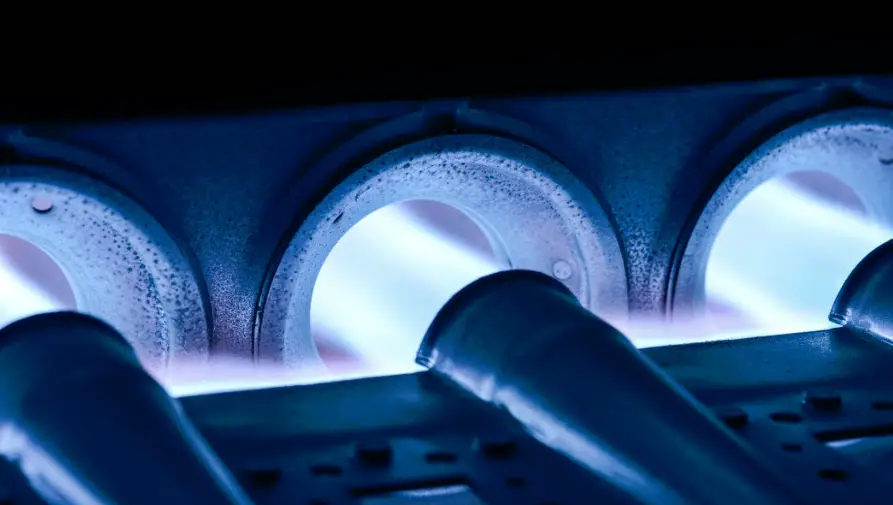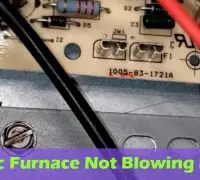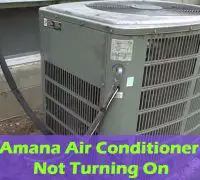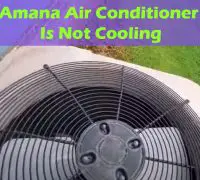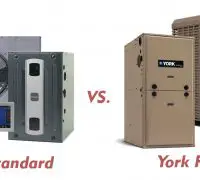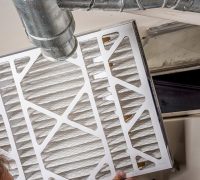Gas furnaces make some of the most dependable systems for home heating. However, they are complicated devices that pose several issues, primarily when not adequately maintained and addressed.
As furnaces start and stop (part of the regular cycling), they go through a lot of wear, so the risk for issues is never null. One of the most common problems for gas furnaces is the inability to ignite. A furnace won’t turn on for various reasons, and you should address the problem right away.
The most straightforward thing to do when the gas furnace doesn’t kick on is to call the HVAC technician. Needless to say, you will have to pay the service fee, which is higher at night and during weekends.
Homeowners who aren’t afraid to try fixing problems on their own should try the following things when the furnace doesn’t ignite.
Page Table of Contents
1. Always start with checking the gas supply.
One of the very first steps to take when you try figuring out if the furnace ignites or not is to make sure that gas gets to it.
- Natural gas furnaces
When you’re connected to the city gas line, you won’t be able to check as it’s quite dangerous to do it on your own. You should call the HVAC technician.
Should smell gas close to the furnace when you turn it on, you most definitely don’t have a problem with the gas supply.
- Lp/propane gas
It’s a lot easier to see if the furnace receives gas or not when your furnace uses liquid propane. You will need to go outside and check the gas storage tank. You will notice a domed area where the fill valve is located in the top center of the tank. You will also notice a gas pressure gauge.
When the gas pressure gauge is reading 25 or above, you shouldn’t worry about the furnace not getting gas. If it’s below 25, you should contact the gas company for a fill-up. Your furnace wasn’t igniting because the tank was empty. And you don’t want to call the professional for troubleshooting when an empty tank was, in fact, the culprit.
2. Examine the air filters
It’s quite often that furnaces won’t start because the air filters are dirty. The gas furnace will burn a combination of air and lp, or natural has. When the air in the system doesn’t circulate properly, it won’t generate the necessary gas/air mixture, so the home system won’t be able to ignite because of this problem.
Sometimes, the air is restricted, so it cannot circulate to the furnace’s igniter. Dirty air filters cause blockage most of the time. Should your furnace not ignite, you have to check the air filters. Check the air filters and replace them at least once a year.
3. Ignition source
There are two different methods in which the furnace will ignite the gas-air mixture. The pilot light has been the primary method for more than three decades, but the electronic ignition system is slowly replacing it.
Pilot light
The pilot light is a tiny flame that is supposed to burn continuously in your furnace. It’s small, so it doesn’t need a lot of gas to run. When you take a look at the furnace’s bottom, you should be able to spot a tray with the burners. The pilot light is placed to the tray’s side, a bit above it.
It’s not challenging to take a look at the pilot light under the furnace to see if it’s lit or not. When it’s not, you may light it up with a long match. If you cannot light it, some severe issues with the furnace could make the pilot light unable to lit.
Electronic furnace ignition
A furnace with an electronic furnace igniter switch is safer and doesn’t need any gas for lighting the pilot light. The igniters are placed in the same place as pilot lights. However, they’re made with a lightweight metal alloy that becomes extremely hot when the electric current goes through it, igniting the gas/air mixture getting inside the furnace.
Check under the furnace to observe if the igniter is glowing or not when the furnace attempts to ignite. A clicking noise should also occur when the furnace is trying to come on. If the clicking is repeated quickly, the igniter is not coming on, and it doesn’t work.
You may carefully reach to see if the igniter is dirty. You can gently clean the igniter and the area around it. Careful operation is crucial because the igniter tip is exceptionally delicate. Constant use leads to carbon build up around the fragile ignition areas, stopping the system from kicking on.
Needless to say, you should always turn off the furnace before checking the pilot light.
When you turn on the furnace and set the thermostat to a higher setting, various things should occur, making the furnace ignite. First, you should notice the system’s fan running as it collects air and begins the burning process. The process continues with the typical swoosh sound from the gas igniting. It will take only a couple of seconds until hot air will flow out of the vents and inside your household.
If any of these actions don’t happen, the thermostat isn’t running correctly. It’s relatively straightforward to see if the thermostat is the culprit or not. None of the regular actions took place because the damaged thermostat didn’t inform the furnace that it’s time to ignite. A dead silent furnace is a sign of a damaged thermostat.
Ensure that the thermostat batteries aren’t dead; you do need to replace them any now and then. If there’s nothing wrong with the batteries and the thermostat is damaged, after all, you will need to replace it. It’s not very complicated, though. Open the control box and identify the thermostat. Some furnaces work with universal thermostat; others take only specific models. The best way to know which model to buy is to take the old thermostat with you when shopping.
When should you call a HVAC professional?
If any of the previous steps didn’t make your furnace ignite, you should call the professionals. Furnaces are tricky machines with sophisticated mechanisms, and repairs/fixing/replacement of parts isn’t for everyone, especially when you have no experience whatsoever.
